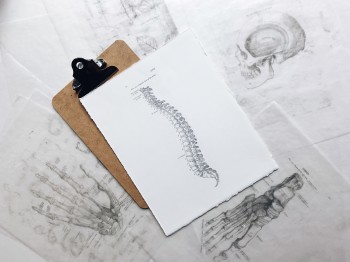What Is A Physiatrist? And Why You Need To See One If You Are In Pain.
by David Chu, MD

Psychiatrist? Physiologist? Physiotherapist?
Physiatrist (fi-zahy-uh-trist)
A Physiatrist is a medical physician (M.D./D.O.) who specializes in Physical Medicine and Rehabilitation (PM&R) and is trained to diagnose, treat, and direct a rehabilitation plan that provides the best possible outcomes for patients. Physiatry uses physical agents and therapeutic exercise in the prevention, diagnosis, treatment, and rehabilitation of disorders that produce pain, impairment, and disability.
Once a Physiatrist completes a 4 year residency, there are a number of further sub-specialties that can be pursued through ACGME certified fellowships such as Interventional Pain Medicine, Sports Medicine, Spinal Cord Injury, Brain Injury, and Neuromuscular Medicine.
Physiatrists are qualified to perform Electrodiagnostic Medicine, which includes nerve conduction studies and needle EMGs. It is the position of the American Association of Neuromuscular & Electrodiagnostic Medicine that only physicians who have completed a residency in PM&R or Neurology should perform these tests.
The common patient complaint of chronic low back pain is the most frequent consultation a Physiatrist will see. With the complexity of low back pain, it is paramount to properly diagnose the cause of symptoms early in treatment. Diagnosis should always be based upon the patient’s history and a thorough musculoskeletal physical exam. Diagnosis should never be based upon diagnostic imaging alone. In a prominent study from the New England Journal of Medicine, 52% of middle age adults who did not have any low back pain exhibited MRI findings of a disc bulge. This demonstrates the importance of proper and prompt diagnosis. Many patients have the misconception that their low back pains are due to the bulging disc that was found on their MRI. They are convinced to undergo lengthy treatments to address these incidental bulging discs, which in all likelihood are not contributing to their symptoms.
Due to the high prevalence of patients with low back pain as well as the complexity to treat, a plethora of treatment options are available. Possible conservative treatments include anti-inflammatory medications, physical therapy, and acupuncture. Should pain persist, treatment can progress to interventional spinal injections to treat pain originating from facet joints and degenerative discs. Regenerative Medicine options, such as platelet rich plasma (PRP) injections and stem cell injections, are becoming more commonly used as well.
Surgical consultation is also considered with patients who continue to have symptoms refractory to conservative treatments. The Physiatrist plays a vital role in coordinating the appropriate level of treatment for these patients. In a recently published study in the journal Spine, patients with back pain were required to undergo a Physiatry consult prior to surgical consultation. This resulted in a 25% drop in the number of spine operations with concomitant decreased overall cost. As non-surgical spine specialists, physiatrists can provide patients with a different perspective on treatment options.
Photo by Joyce McCown on Unsplash
- Tags: Back Pain, Medicine, Pain, Pain Management, Physiatry




